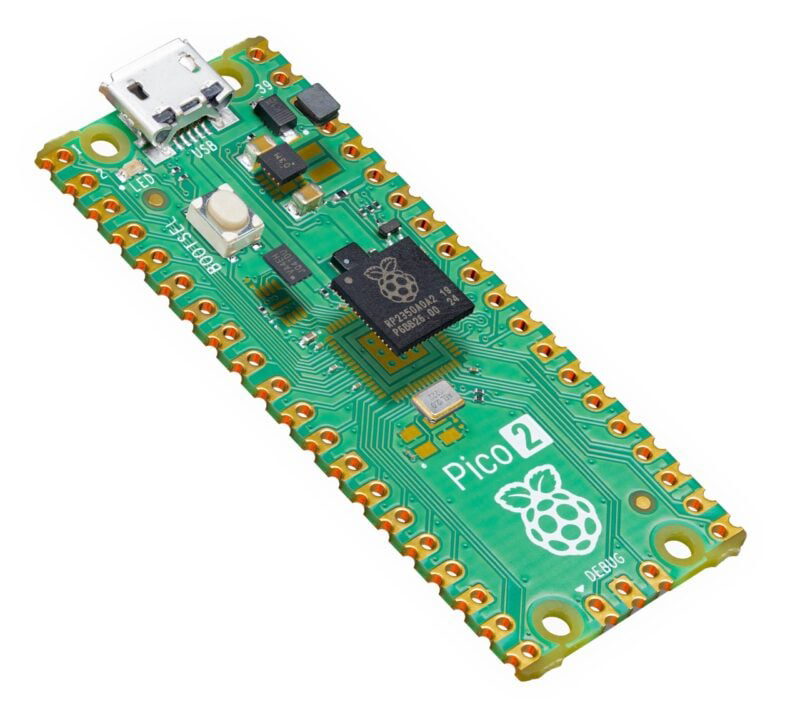Raspberry Pi has announced the Pico 2 microboard, which is based on the RP2350 hybrid chip: this product combines Arm and RISC-V cores. The new product is stated to be backward hardware and software compatible with earlier representatives of the Pico series.
The original Raspberry Pi Pico board debuted in January 2021. It received a self-developed RP2040 microchip containing two Cortex M0+ cores with a base clock frequency of 48 MHz and the ability to increase to 133 MHz. The RP2350 chip, in turn, has a more complex design.

Image source: Raspberry Pi
The RP2350 includes two cores each: Arm Cortex-M33 and RISC-V Hazard3 (RV32I with extensions): in both cases, the clock frequency is 150 MHz. However, these clusters cannot be used together – one of two configurations is selected when the device is initialized. However, if you select RISC-V, some of the security functions and FP64 acceleration will not work. The chip exists in modifications RP2350A (QFN-60; 7×7 mm; 30×GPIO) and RP2350B (QFN-80; 10×10 mm; 48×GPIO). There is 520 KB of SRAM in both versions.
The Raspberry Pi Pico 2 board has 4 MB of QSPI flash memory and a Micro-USB 1.1 port. It talks about support for 2×UART, 2×SPI, 2×I2C, 16×PWM, 4×ADC. The dimensions of the new item are 51×21 mm. Supply voltage is from 1.8 to 5.5 V. The operating temperature range extends from -20 to +85 °C.
The Raspberry Pi Pico 2 board is available individually or in batches of 480 pieces. The product will be produced at least until January 2040, that is, the life cycle is at least 16 years. You can purchase the new product for $5.